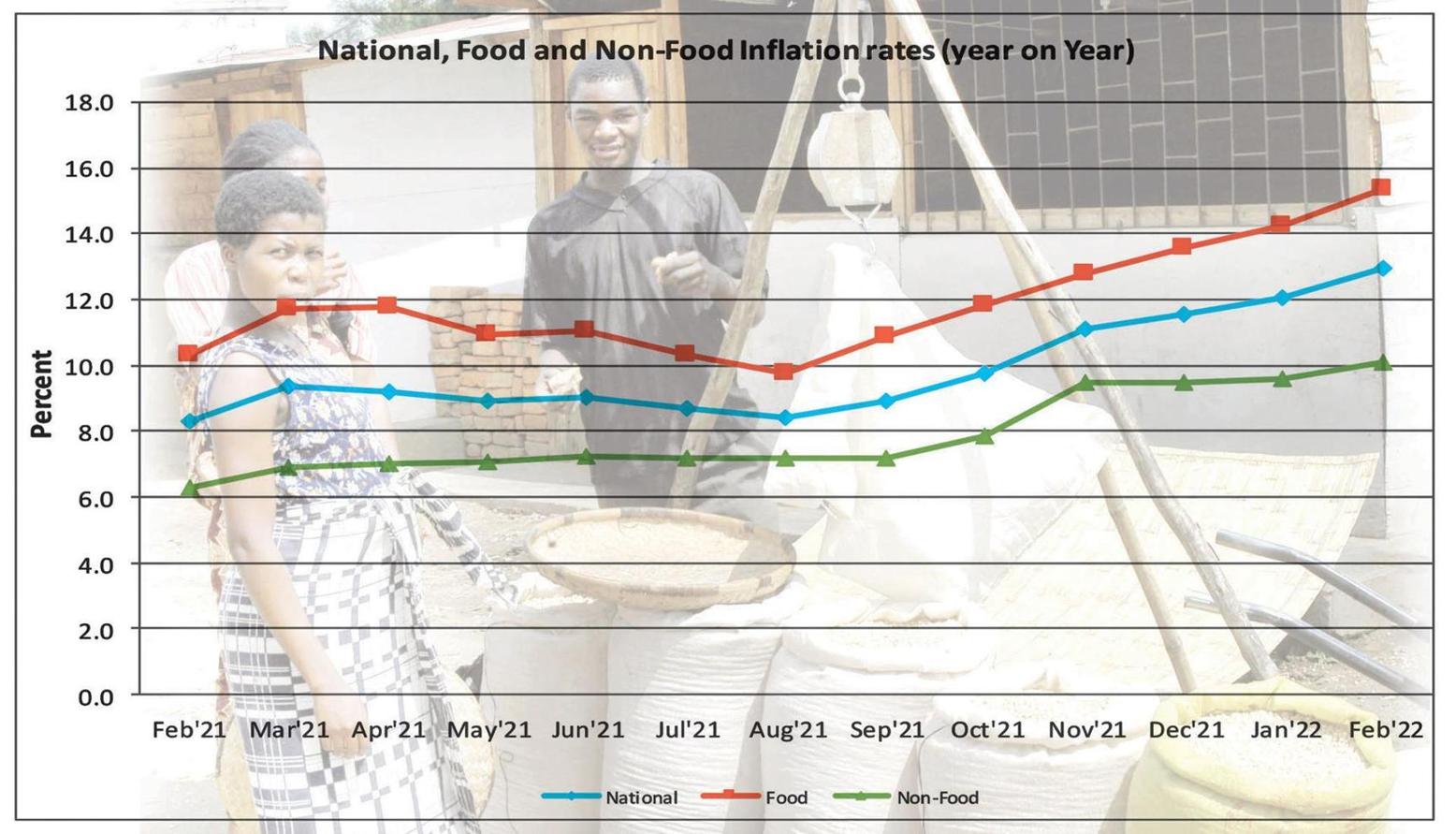Africa-Press – Malawi. Elevated food prices in the country, coupled with persistent disruptions to global commodities supply chain, continue to pile pressure on Malawi’s headline inflation—the rate at which prices of commodities change at a given time—seen at 13 percent in February 2022.
Figures from the National Statistical Office (NSO) show that inflation soared by about 0.9 percentage points from 12.1 percent registered in January. This is after another rise from 11.1 percent in December 2021.
Both food and non-food inflation have been on an upward spiral in recent months owing to seasonality of the economy and the country’s heavy reliance on exports where commodity prices have been rising also due to the Covid pandemic and recently Russia’s invasion of Ukraine.
In a statement, NSO says food and non-food inflation rates stood at 15.3 and 10.1 percent, respectively. The food component, largely influenced by maize—Malawi’s staple crop which has a huge weight at 45.2 percent in the Consumer Price Index—heavily impacts the country’s inflation.
As the lean season gets to its peak between February and April, maize price rises as stocks are seen depleting. The commodity’s price now ranges from K11,000 to K12,500 per 50 kg bag.
The Famine Early Warning Systems Network recently warned recently that, given the poor performance of the rains and concerns of a below-average harvest in March-April, traders are likely hoarding supplies, which may put upward pressure on retail prices in the coming months
On the other extreme, prices for other basic commodities have also been rising in the country, piling pressure on buying power. Figures from the Centre for Social Concern (CfSC) show that, in January 2022, the cost of living for a household of six people reached K236, 000 from K227,000 in the preceding month.
Experts fear headline inflation will continue rising in the short to medium terms as the Malawi economy remains susceptible to numerous shocks. In an interview on Monday, Malawi University of Business and Applied Sciences -based economist Betchani Tchereni said the country was in a very tight situation evidenced by a volatile foreign exchange situation and weakening local currency, among other factors.
“Storm Anna and other storms have destroyed crops in many parts of the country which may lead to depressed food output leading to higher food inflation,” Tchereni warned.
In a separate interview, Director for Center for Research and Consultancy Milward Tobiasi said the annual average inflation could be higher than the 9.1 percent projected rate.
For More News And Analysis About Malawi Follow Africa-Press






